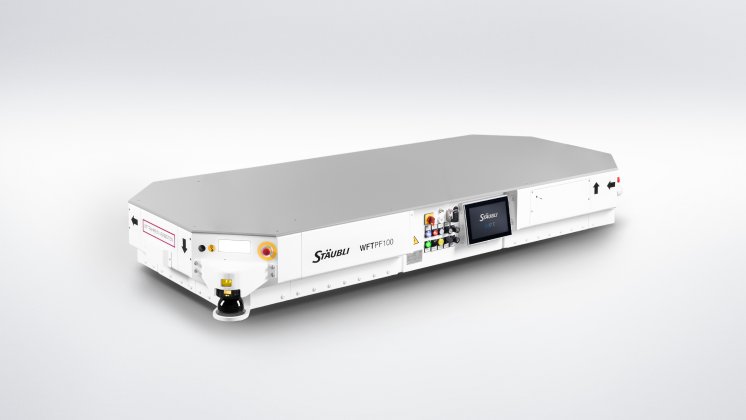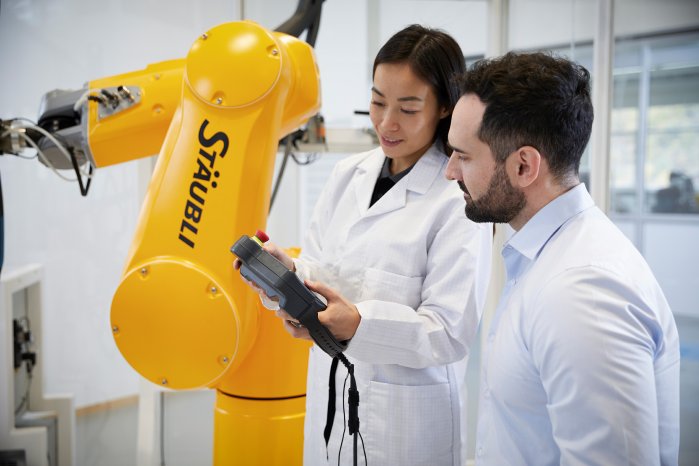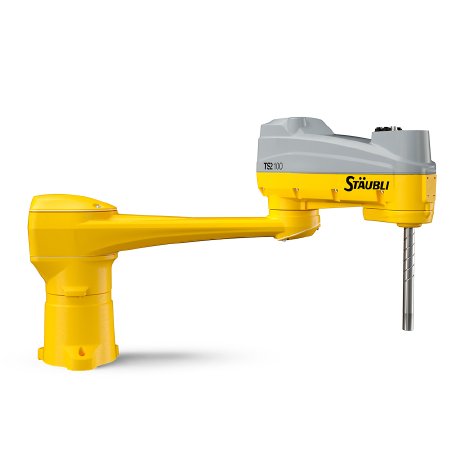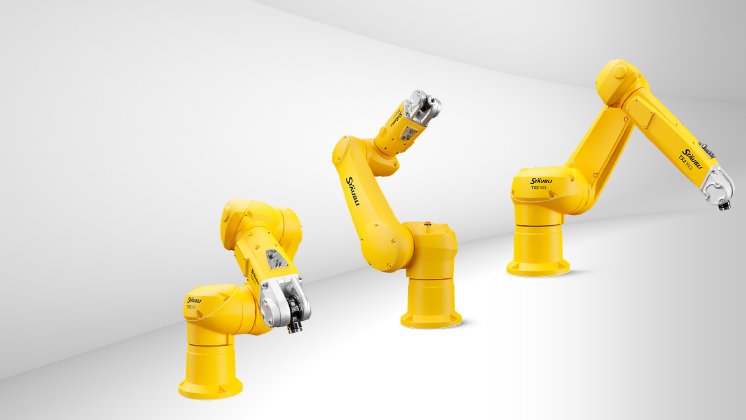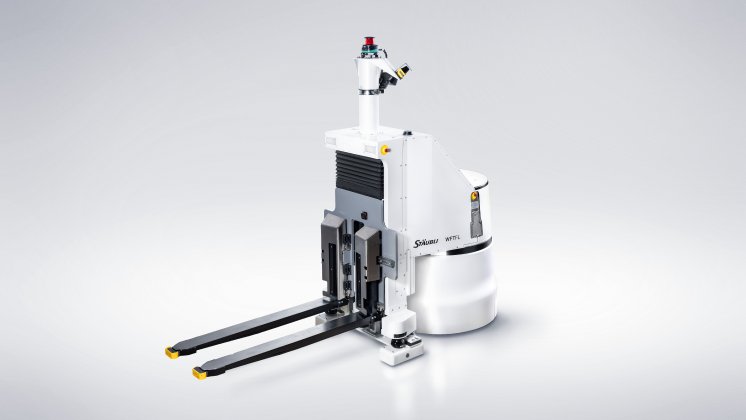In the “Smart Factory” the classic linear structure has disappeared, and fixed conveyor technology has been replaced with highly flexible transport solutions involving the use of AGVs (Automated Guided Vehicles). The digital networking of stationary and mobile robots, cobots, AGVs, autonomous forklifts and HRC (Human Robot Collaboration) workstations bring unprecedented flexibility to production.
The parts to be assembled are delivered to the production area by heavy-duty AGVs. Here, they are received by compact, unmanned forklifts and distributed to the relevant assembly stations. Within the smart factory, the partially assembled components are then conveyed by smaller AGVs or mobile robots which independently navigate their way to the assembly stations where predefined work content is performed.
These assembly stations are configured differently depending on the degree of flexibility required; in many cases, a combination of classic stationary robot stations and highly flexible HRC workstations proves to be the best solution. Mobile robot systems are also the first choice as flexible production assistants. With this process, individually equipped variants and derivatives can be assembled, and in the case of complete product changes, it is not necessary to strip out entire production lines, but only to reprogram robots and AGVs.
Smart solutions from a single provider
A look at the smart factory shown here reveals a rather special feature: the entire workflow is dependent throughout on robots and vehicles supplied by Stäubli. The Robotics, WFT and Connectors divisions of the Stäubli Group have the distinction of being the world’s only suppliers able to offer digitally networked production solutions of this complexity from a single source.
At Stäubli today, producers can find everything they need to set up a smart factory, from high-performance four-axis and six-axis robots, mobile robot systems, POWER Cobots, AGVs of various types, collaborative AMRs (Autonomous Mobile Robots) and unmanned forklifts through to key components such as fully automated tool change systems for robots.
SCOPE: Digital production at a glance
To ensure that users have full transparency over their smart production, Stäubli has developed a platform called SCOPE. The acronym stands for “Stäubli Connect, Optimize, Prevent and Enable,” which neatly summarizes the nature of this digital solution for the networking of up to fifty robots. Implemented as an on-site edge solution, the platform aggregates, processes, and visualizes the robot-specific data.
Users can view a wide range of relevant operating data for each individual robot system on a central dashboard and thus have an overview of the status of all robots at all times (“Condition Monitoring”). This creates the prerequisite for detecting irregularities and taking appropriate preventive action before quality fluctuations or even failures become imminent. Machine evaluations allow predictive maintenance, with the option for users also to run their own AI-controlled optimization processes.
All in all, these highly flexible intralogistics and production logistics offer the perfect solution for today’s production engineering challenges. Ever smaller batch sizes, individualized products, frequent model changes or the assembly of different products at the same time present no problem at all for the modern Smart Factory.
